
Stove Testing at the Wood Stove Decathlon,
Washington DC, Nov. 15 - 19, 2013
Introduction
Woodstock Soapstone
Travis
Wittus
Inter-Continental
Ofenbau and Feuerstellen
HWAM
Tulikivi
Intensi-Fire
Mulciber
Walker Stoves
Smart Stove
Kimberly
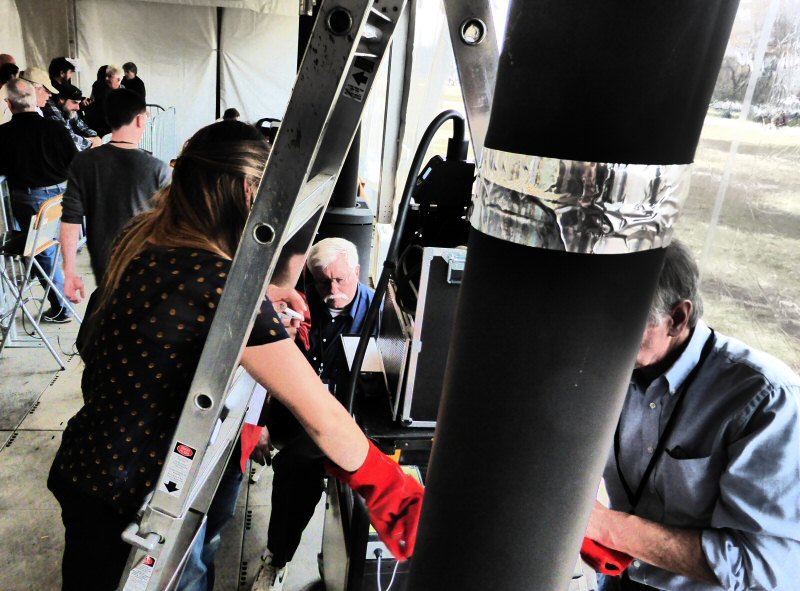
Introduction
See overview report of the event in MHA News

Arrival at The National Mall Thursday morning.
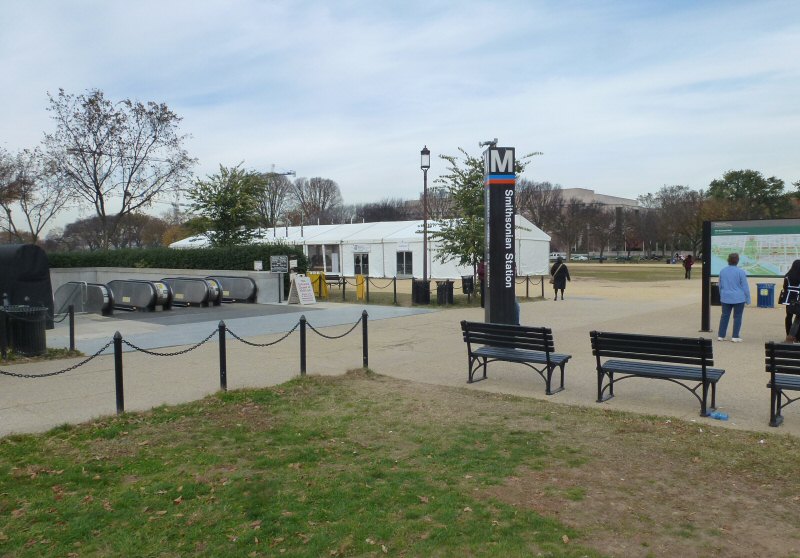
Great location, right at the Smithsonian subway stop.
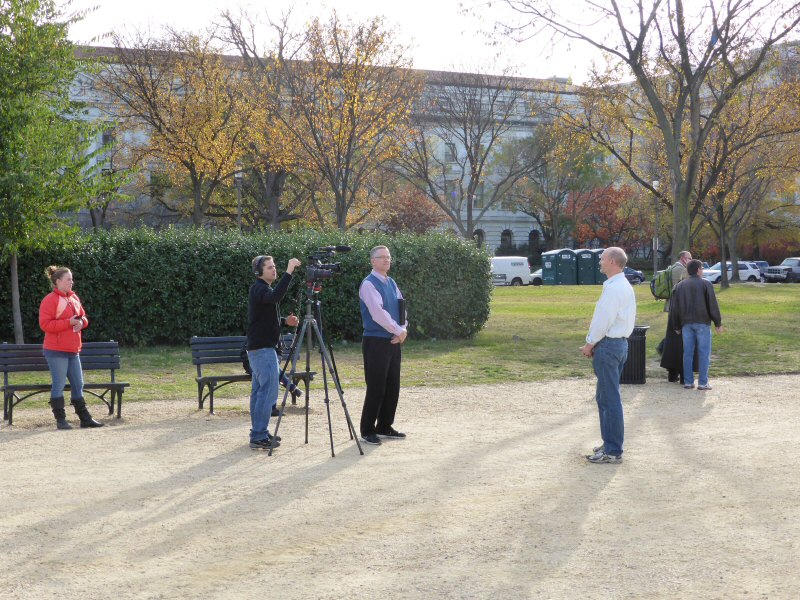
There was a lot of media interest in the Decathlon, including a feature article in the New York Times and a
feature video by National Geographic.
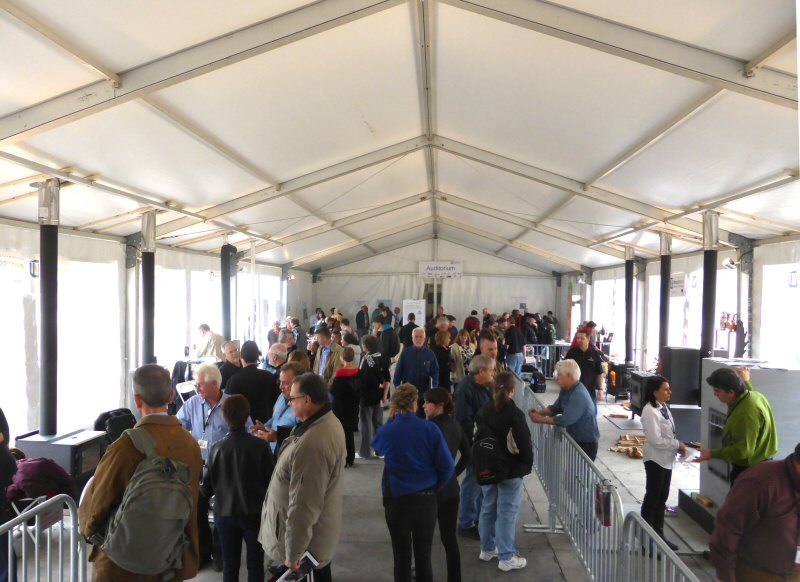
Interest was very high during open public hours.
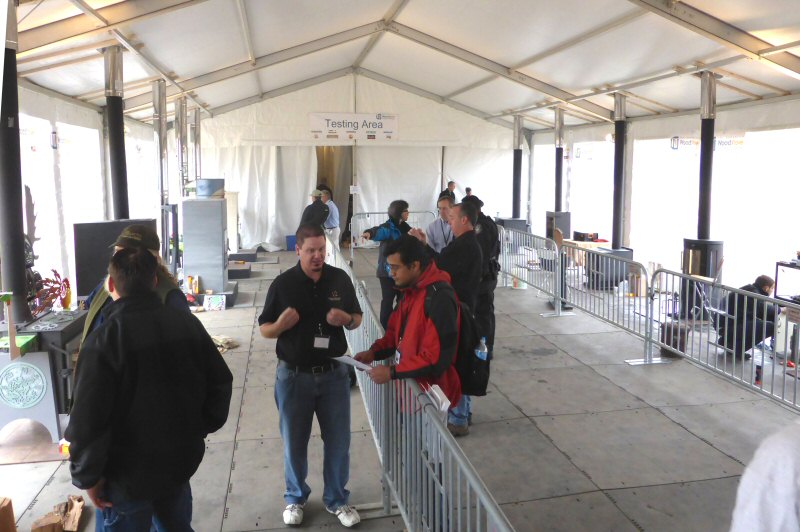
Testing continued before and after public hours.
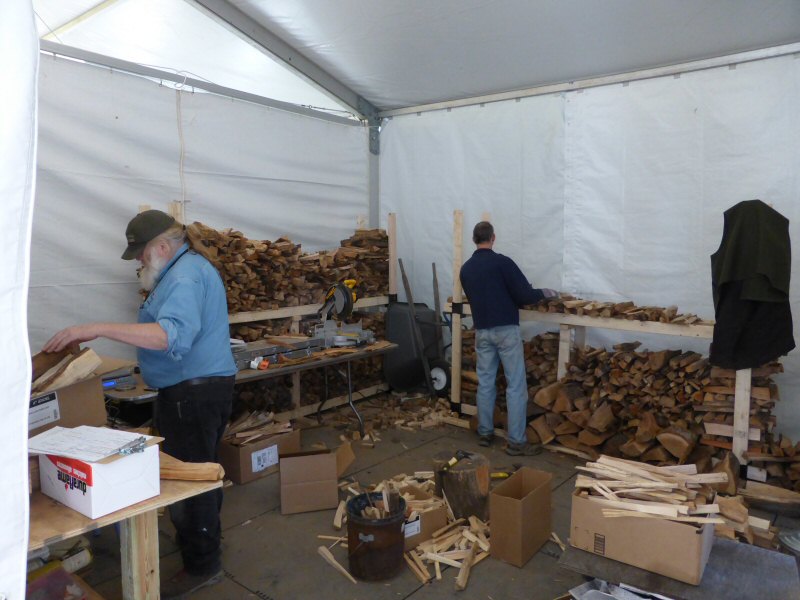
Fuel preparation area.
Ben Myren was assisted by Spafford Ackerly.
Each piece was measured for moisture at 3 locations and weighed, and the data recorded on a fueling sheet
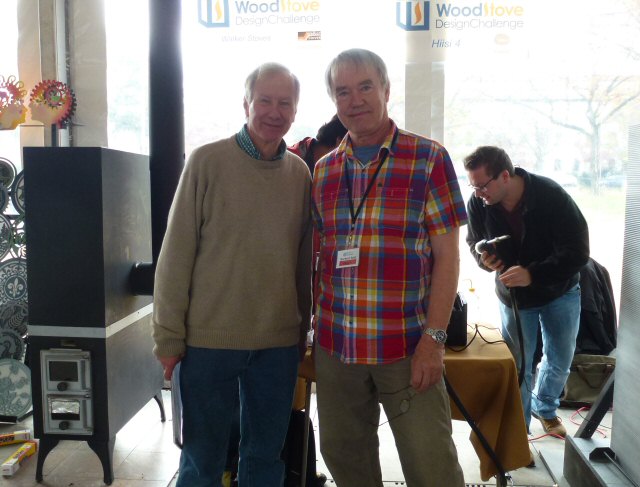
Dr. Tom Butcher was our testing authority. He runs the combustion lab at Brookhaven National Laboratory.
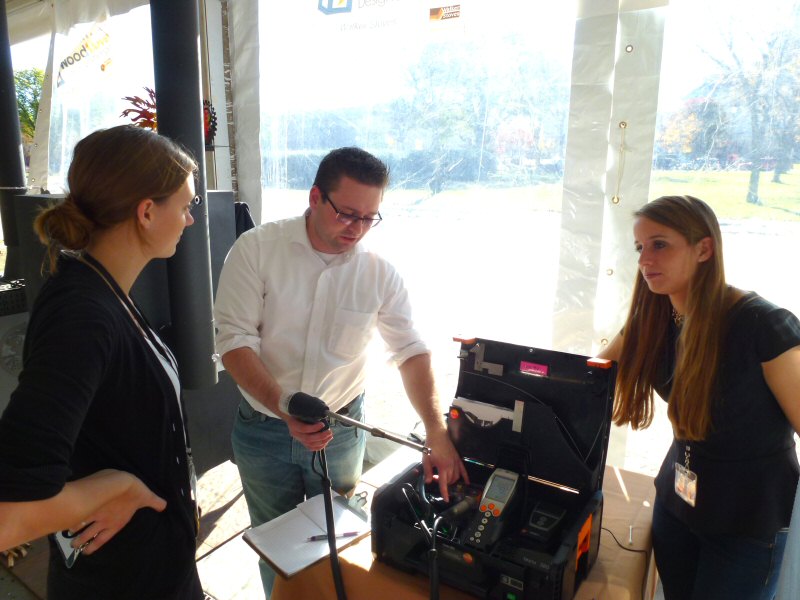
Rebecca Trojanowski (right) works at Brookhaven and was the main testing technician for the Decathlon.
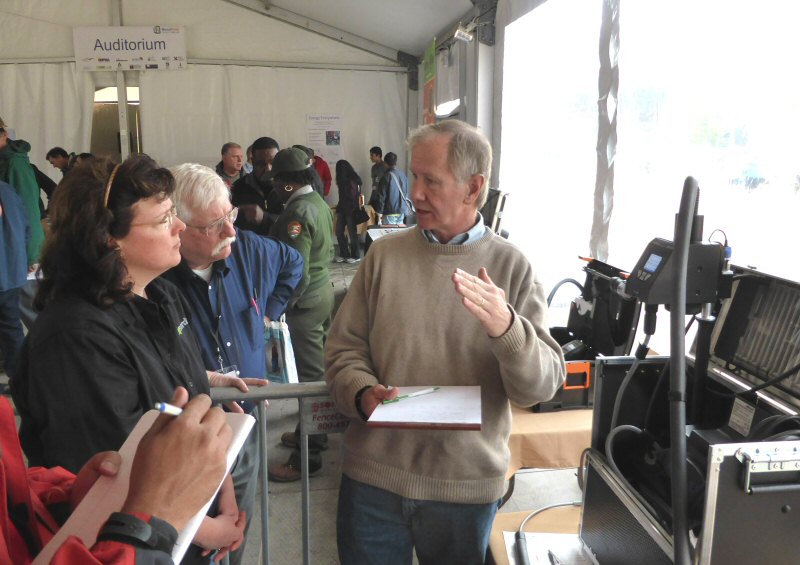
Judges Ellen Burkhard, Phil Hopke and Tom Butcher with the Woehler SM500 real time emissions analyzer.
See previous report on this instrument.
Woehler website (Google translate)
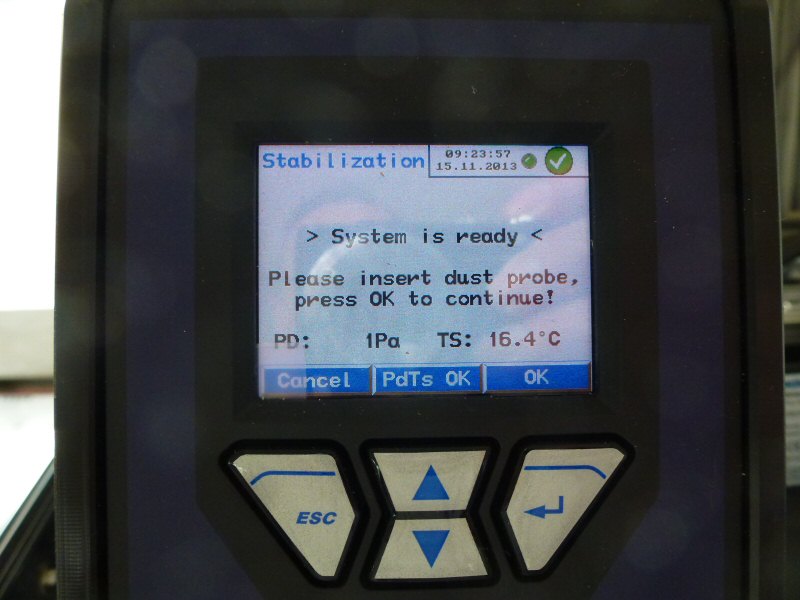

This
is the first portable instrument to provide real time particulate (PM)
data, including filter loading in real time. The above graph shows
the cumulative filter load in
milligrams.
Particulates are also reported as a concentration, mg/m3 of
exhaust gas, normalized to 13% oxygen and standard temperature
and pressure (STP). Mg/m3 is an emissions factor, convertible to g/kg of dry fuel. To determine an emissions rate (g/hr),
you also need to know the burn rate of the appliance.

Woehler filter after a particularly clean run. Normally it would be black with soot.
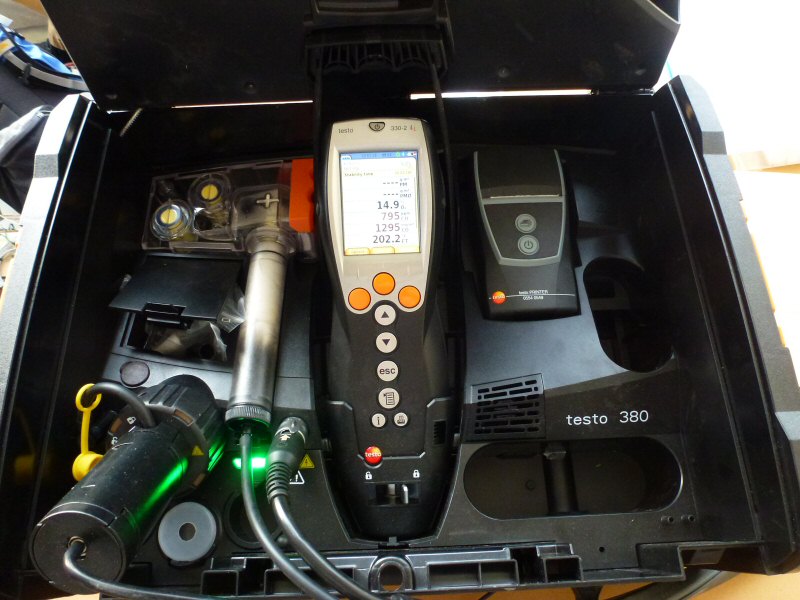
We also used two Testo 380 portable real time emissions analyzers. These are also new instruments from Germany.
Both
the Testo and the Woehler will be used by chimney sweeps in Germany to
perform an on-site PM and CO emissions test of every
stove in the
country, every two years, according to a new federal regulation. The
cost for an emissions test plus chimney cleaning averages
around
$150.00 and takes one hour. The new regulation was contingent on the
development of the PM measuring technology used by these
analyzers.
It is interesting to compare this with the Condar portable dilution tunnel, which was developed 30 years ago in the US, and had been used
by Lopez Labs for on-site PM measurements.
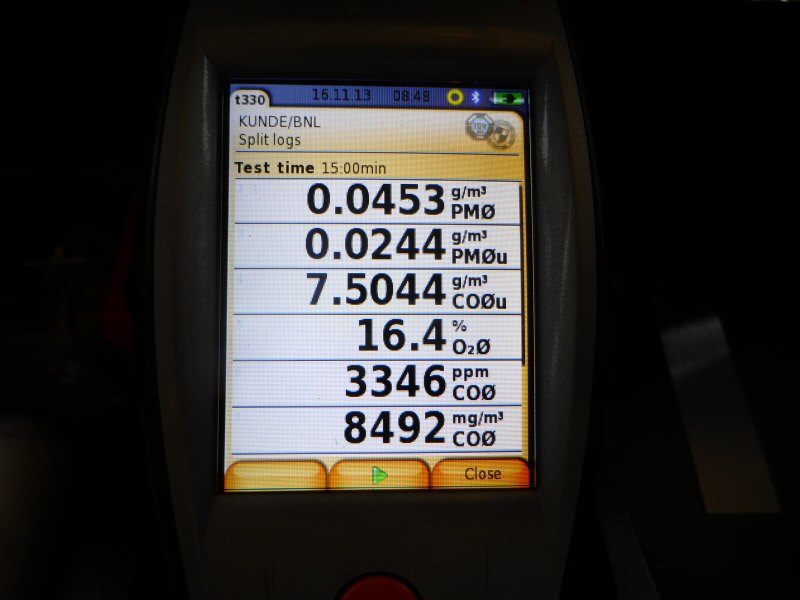
The 380 incorporates a Testo 330-2 LL, which a number of MHA members already use for masonry heater testing..
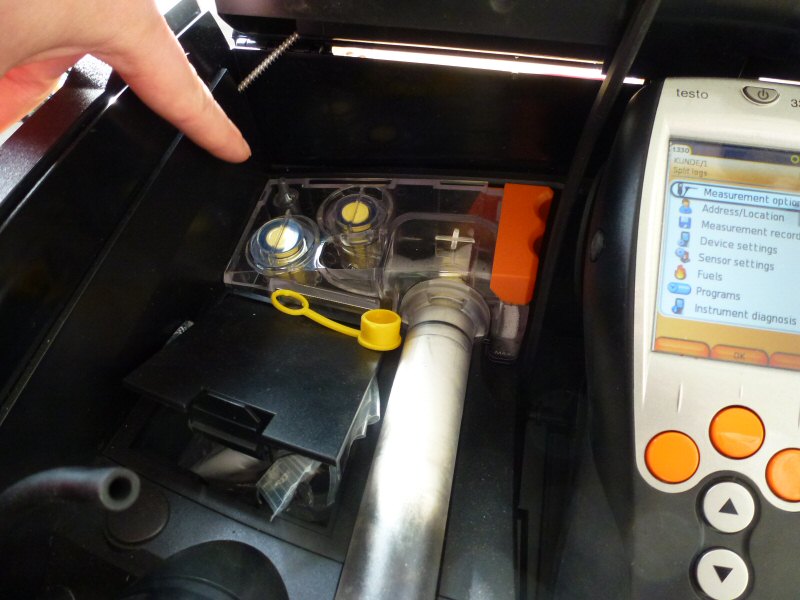
Filters for incoming ambient air. The large filter on the right is for the sample gases, after the PM analysis, but before the
gas analysis.

The
probe head has a rotating diluter, to dilute the sample enough that
there are no deposits in the sample line, without having to heat
up the line. It first draws a sample to determine the particulate loading, and then chooses an optimized dilution ratio.
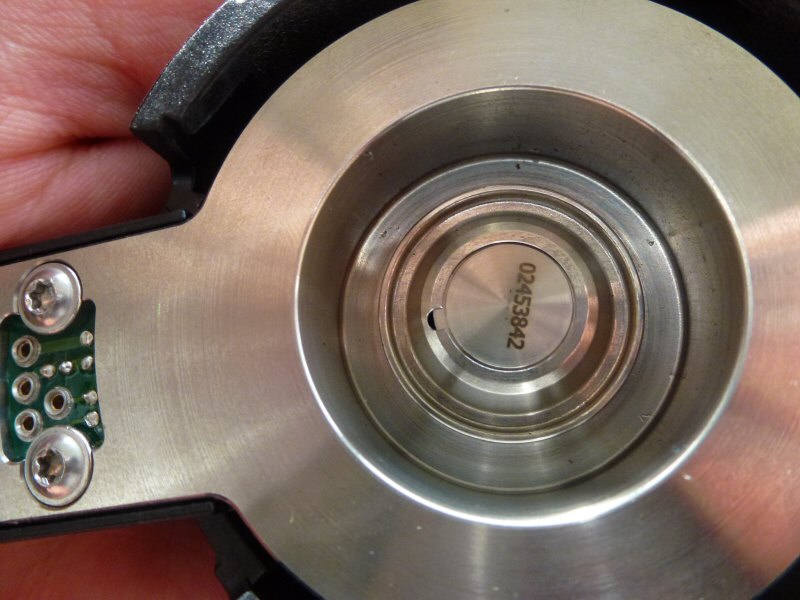
The sample is accelerated through the small nozzle to the left of the disc, before it hits a gold impactor plate.
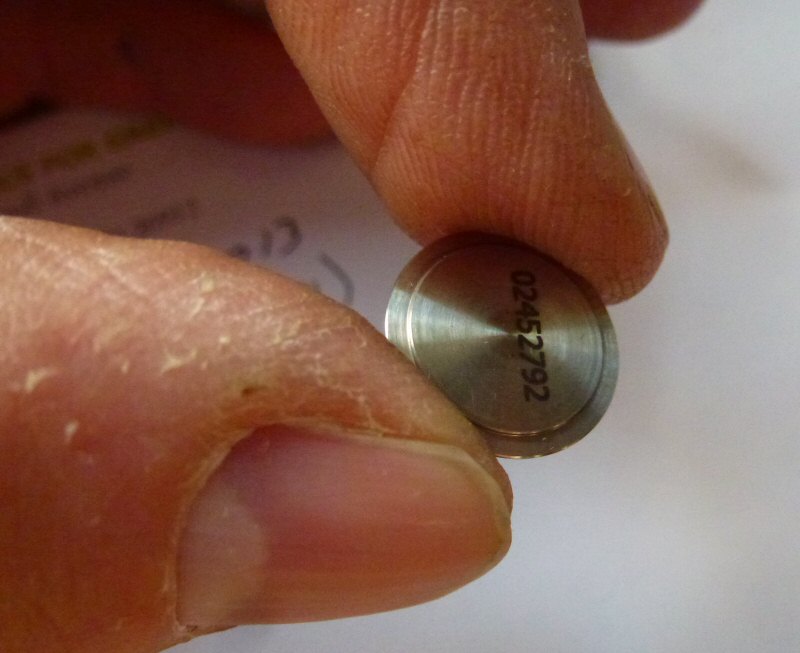
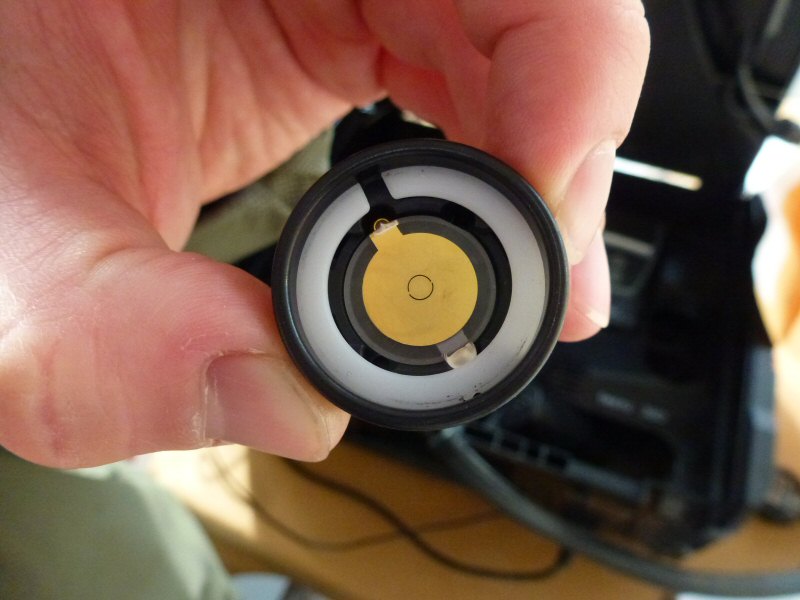
Impactor plate. It rotates during the test. The sample is seen as the circular donut shaped trace near the center.
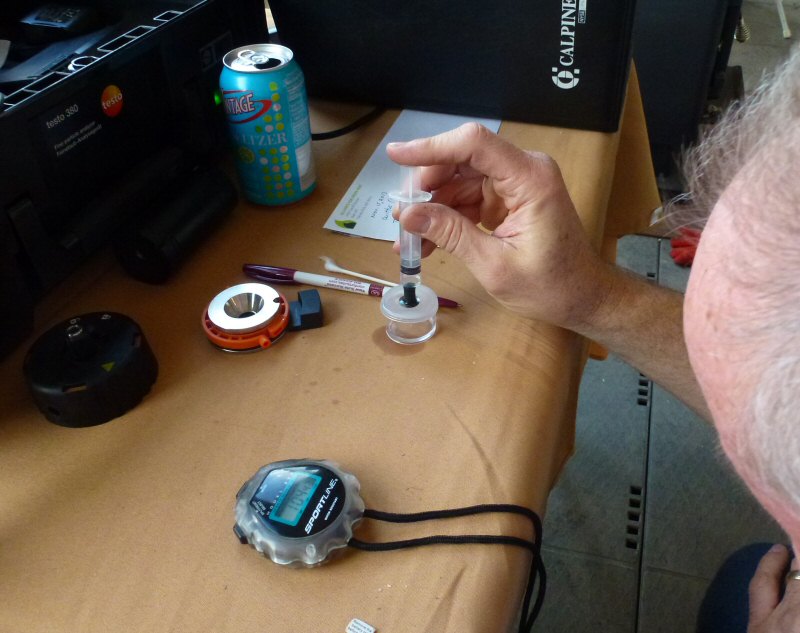
The nozzle and plate are easily cleaned with methyl alcohol between runs.
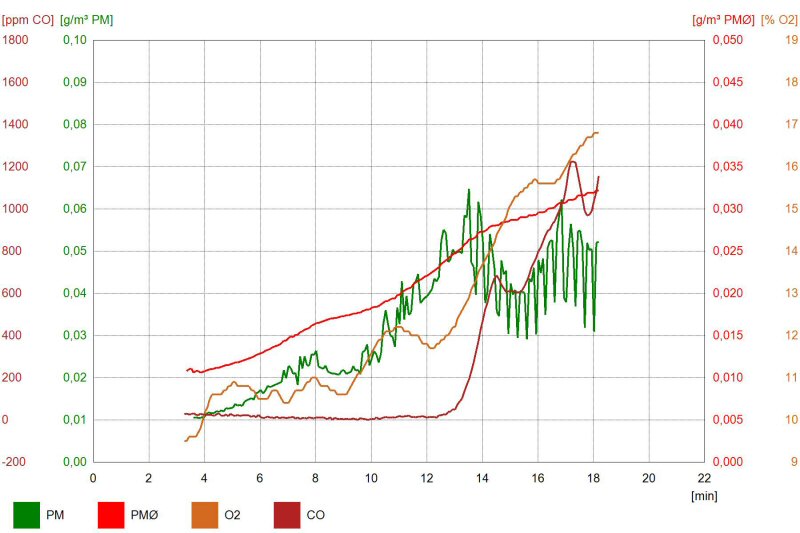
The Testo also generates a real time graph that includes PM.
Note that this burn has very low CO until the 13 minute mark (10 minutes into the 15 minute test run). At that point CO
starts to rise, which normally indicates the burn entering the tailout (charcoal) phase.
Of interest, note that real time PM concentration curve rises in parallel with the CO curve, but leads it by 2.5 minutes.
Woodstock Soapstone
Website
Popular Mechanics profile
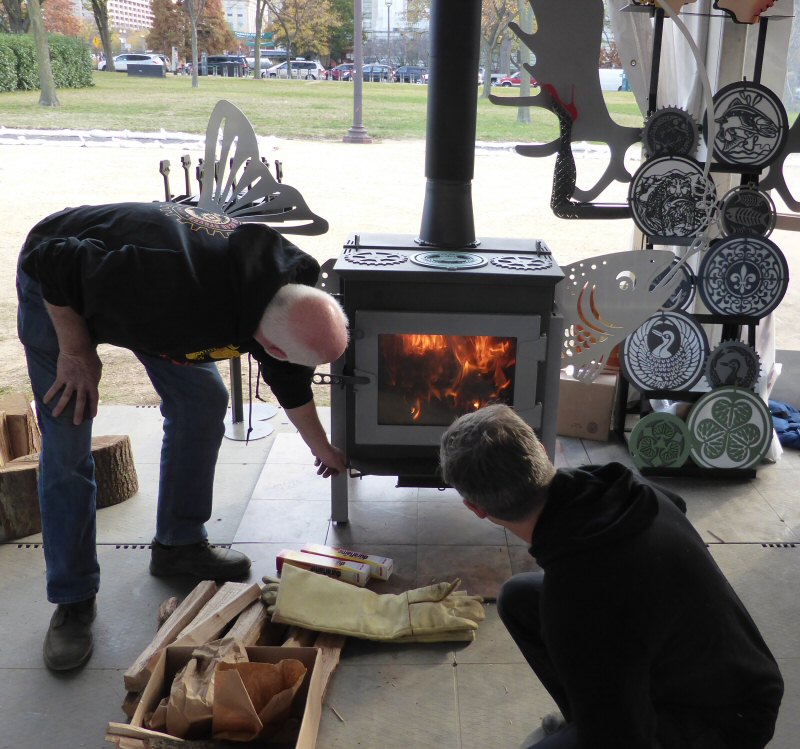
11/14/2013 3:02:38 PM
This stove was the $25,000.00 grand prize winner
.
Emissions and Efficiency counted for 10 points maximum each.
A
maximum of 10 points was also awared in each of the categories of
affordability, consumer appeal and innovation. See the Popular Mechanics
link,
above, for background information on the stove design. It was designed
specifically to compete in the Decathlon and meet all
5 criteria.Travis
Website
Popular Mechanics profile
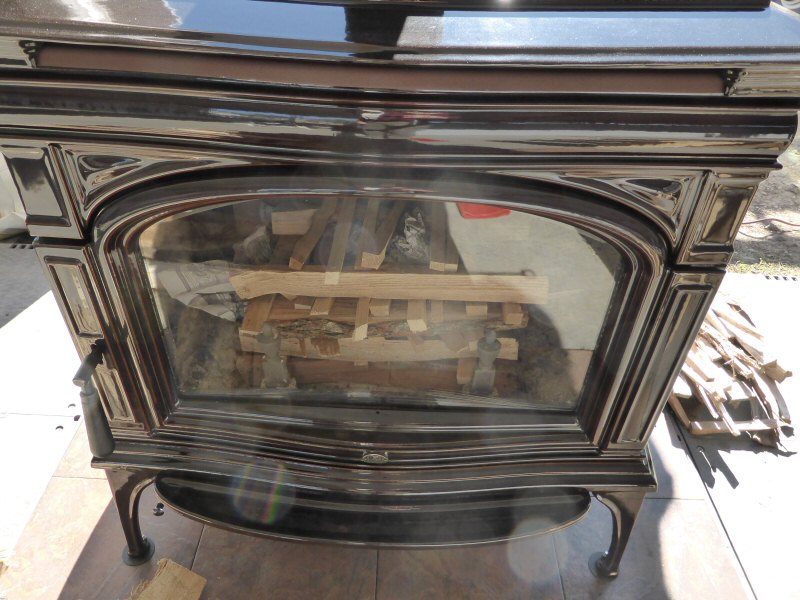
The Travis Lopi tied for second place.Wittus
Website
Profile
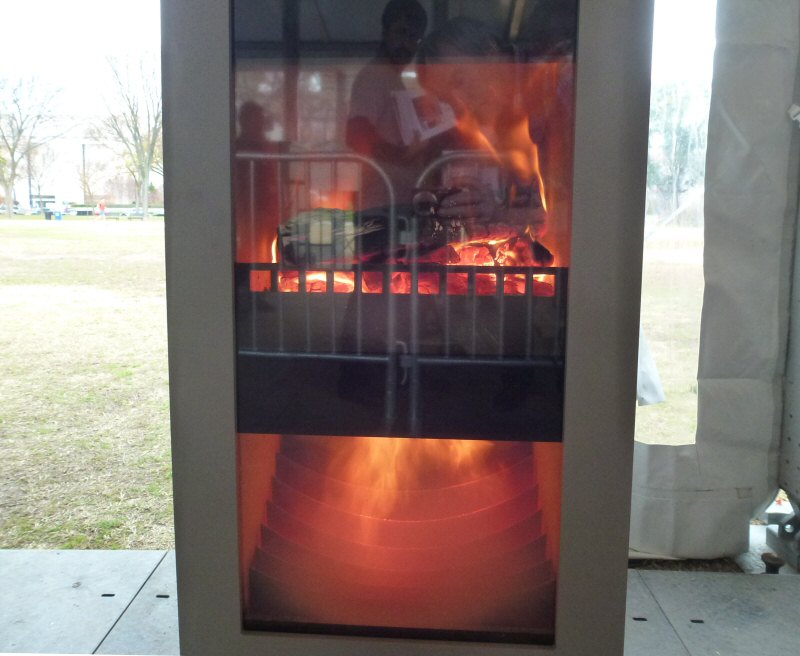
The Wittus tied for second place. No third place was awarded.
It has a lot of consumer appeal, with the spectacular downdrafting gasification display.Ofenbau and Feuerstellen
Website
Popular Mechanics profile
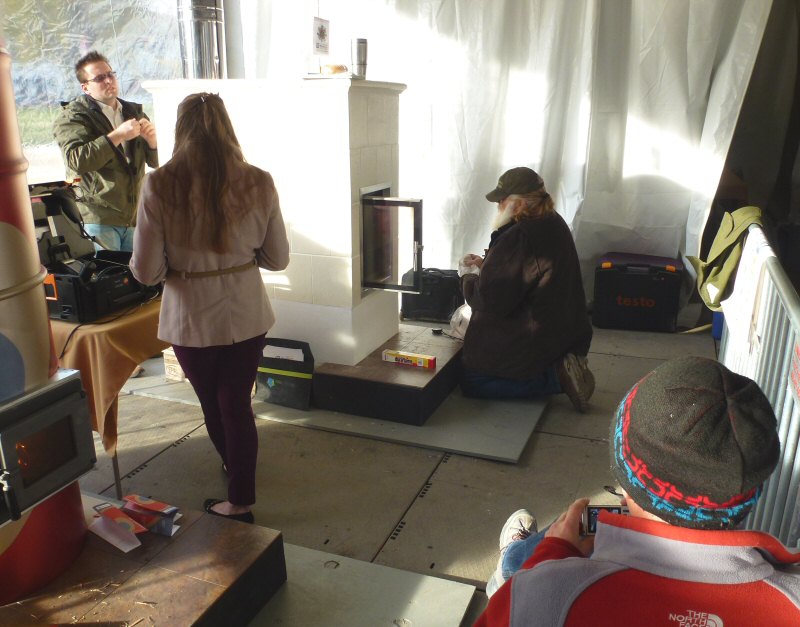
11/15/2013 8:30:24 AM

11/15/2013 8:25:40 AM
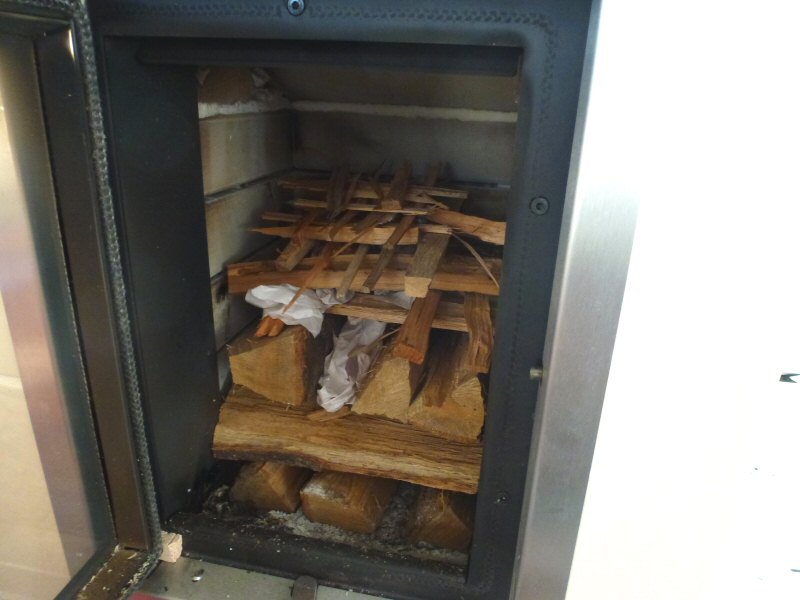
11/15/2013 8:30:56 AM
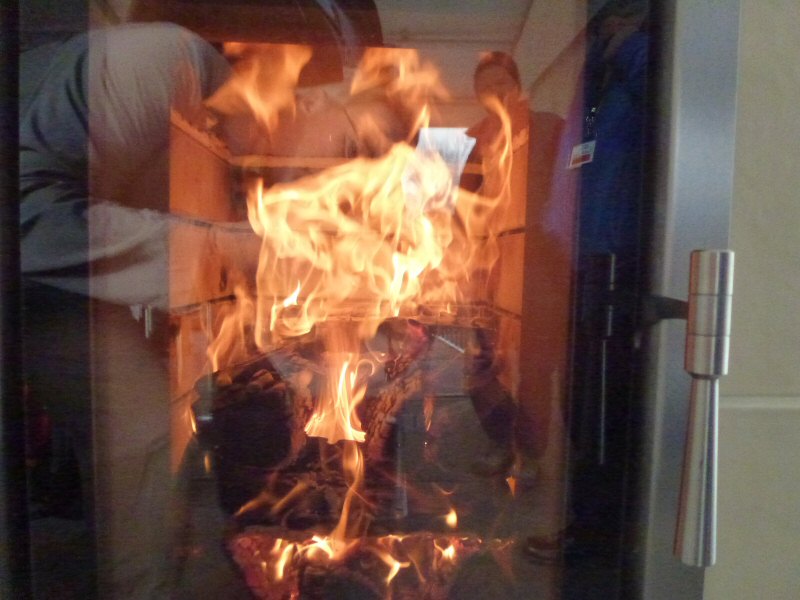
11/15/2013 8:58:08 AM
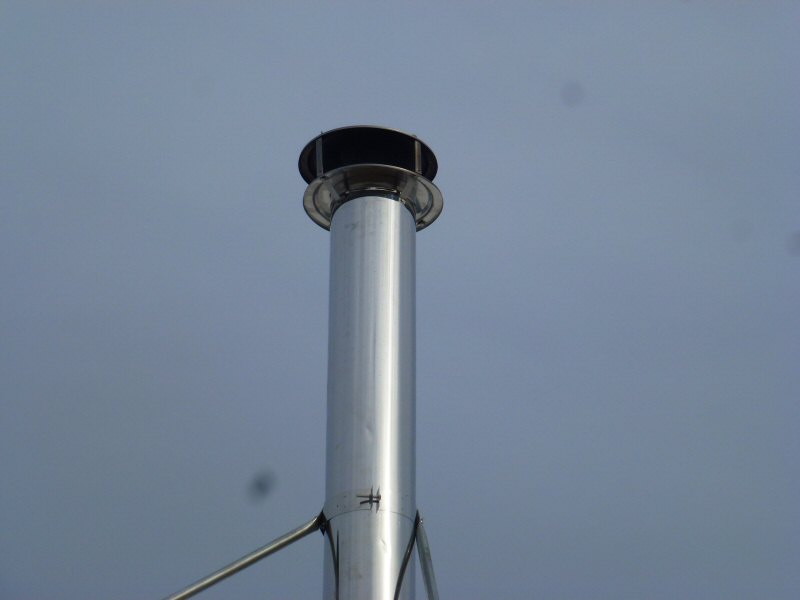
11/15/2013 9:19:14 AM
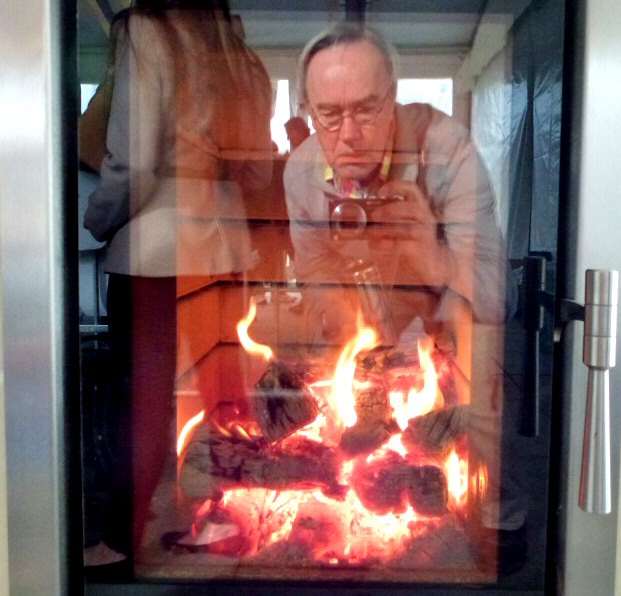
11:15:2013 9:24:35 AM
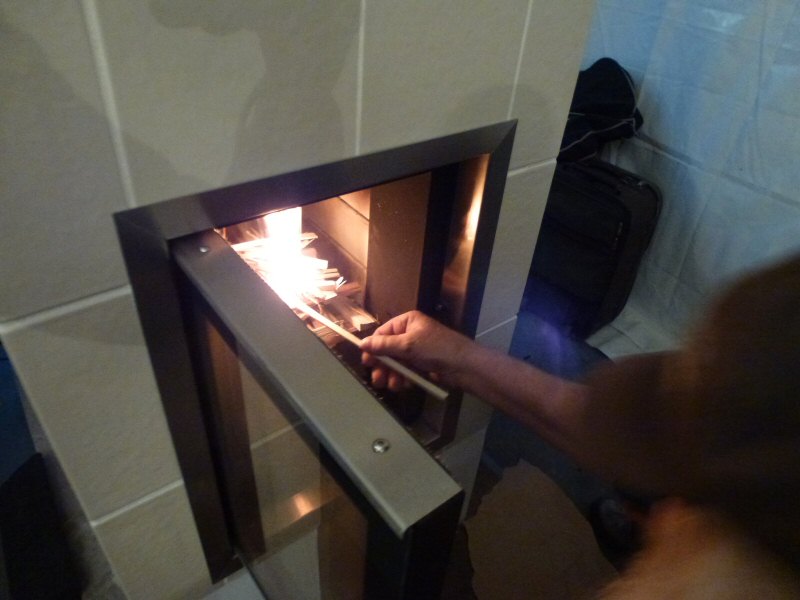
11/16/2013 5:07:52 PM
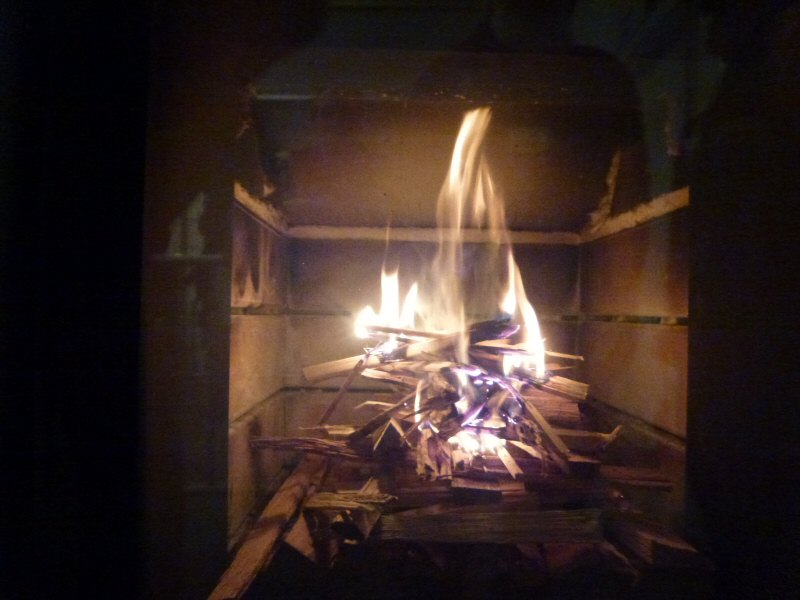
11/16/2018 5:08:52 PM
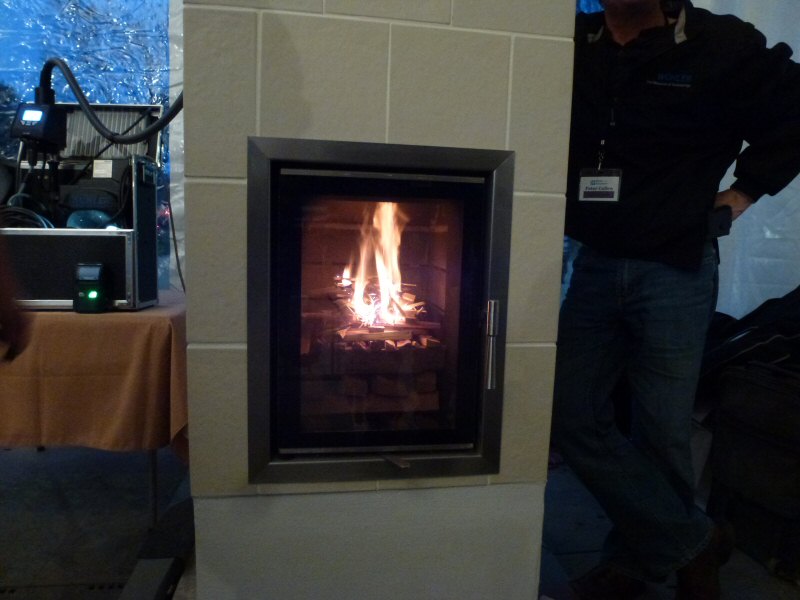
11/16/2013 5:09:32 PM
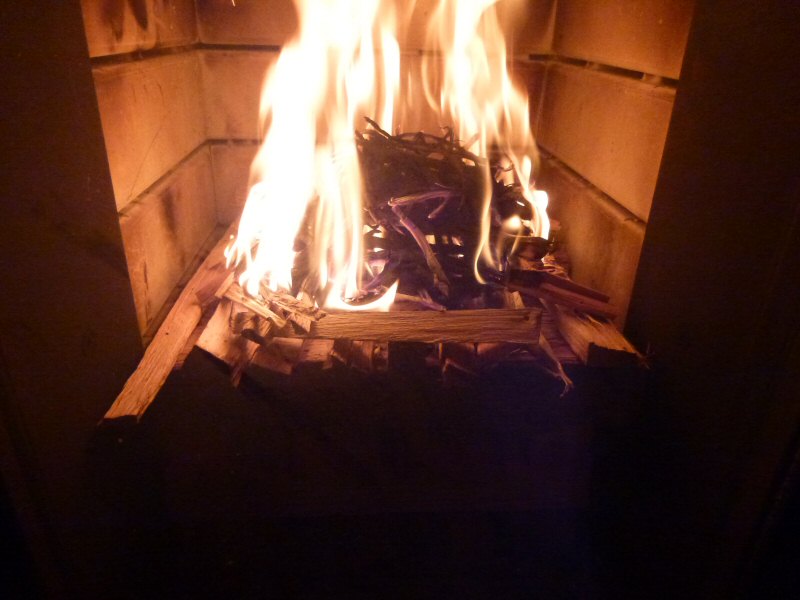
11/16/2013 5:13:10 PM
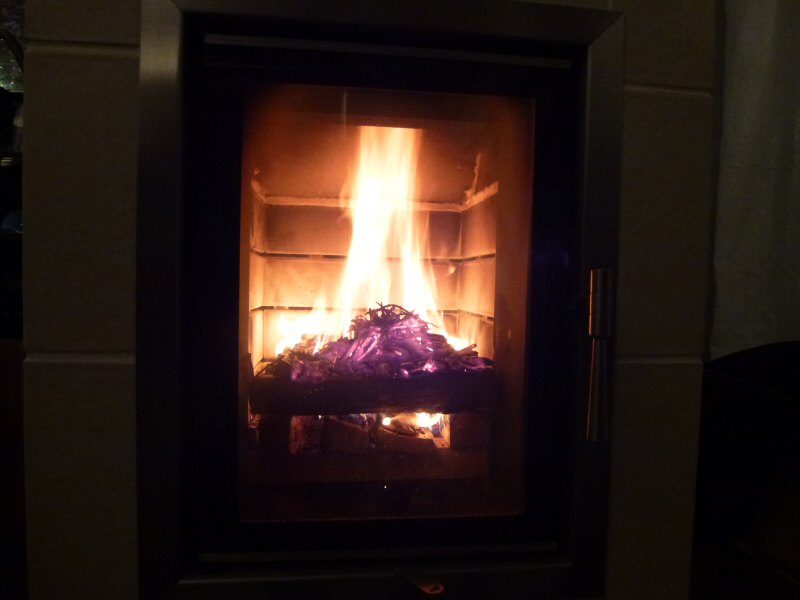
11/16/2012 5:24:16 PM
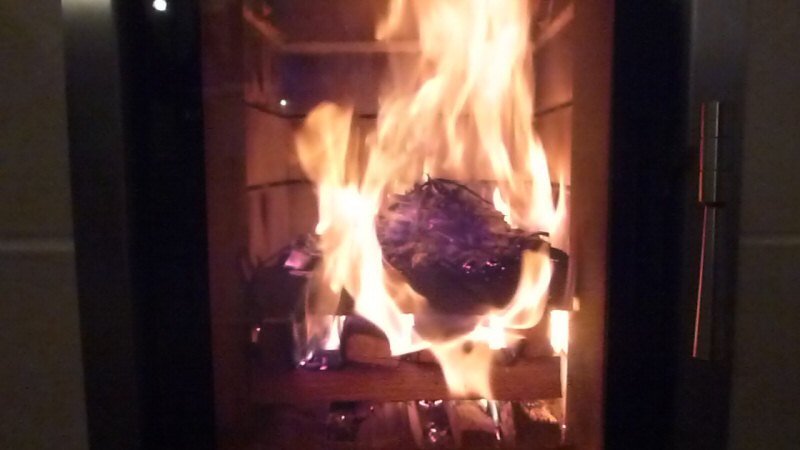
11/16/2013 5:32:16 PM

Tulikivi
Website
Profile
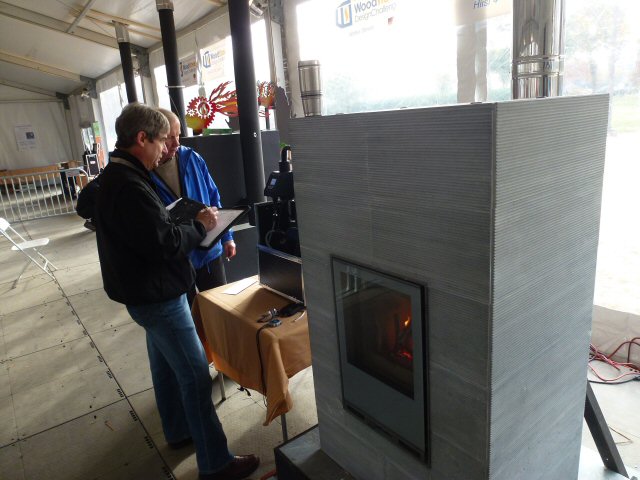
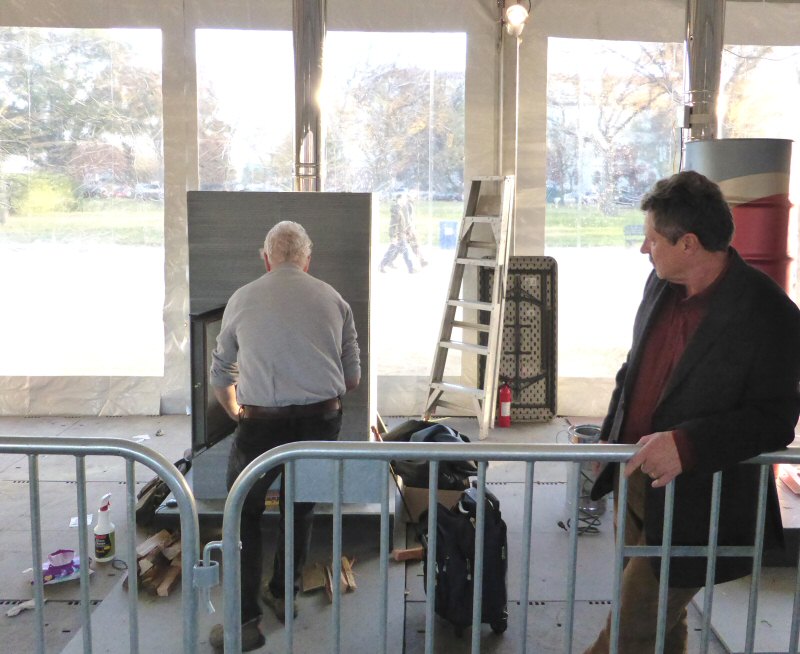

11/15/2013 9:14:48 AM
Inter-Continental
Website
Profile
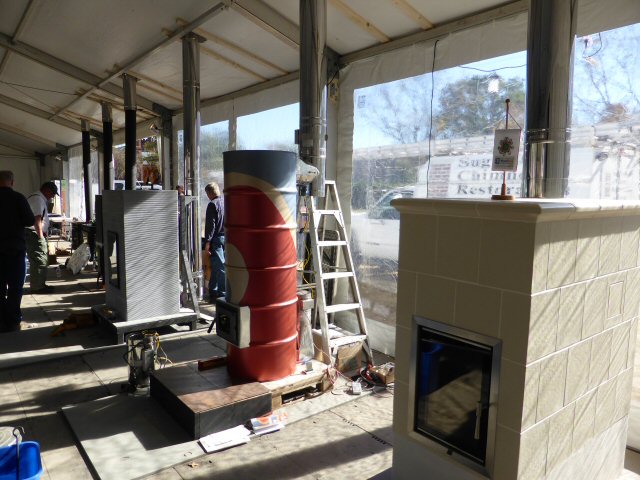
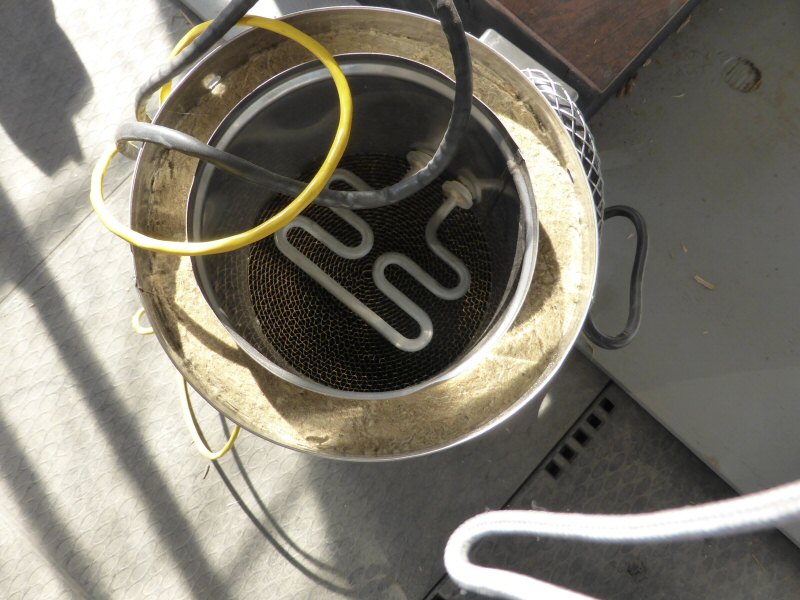
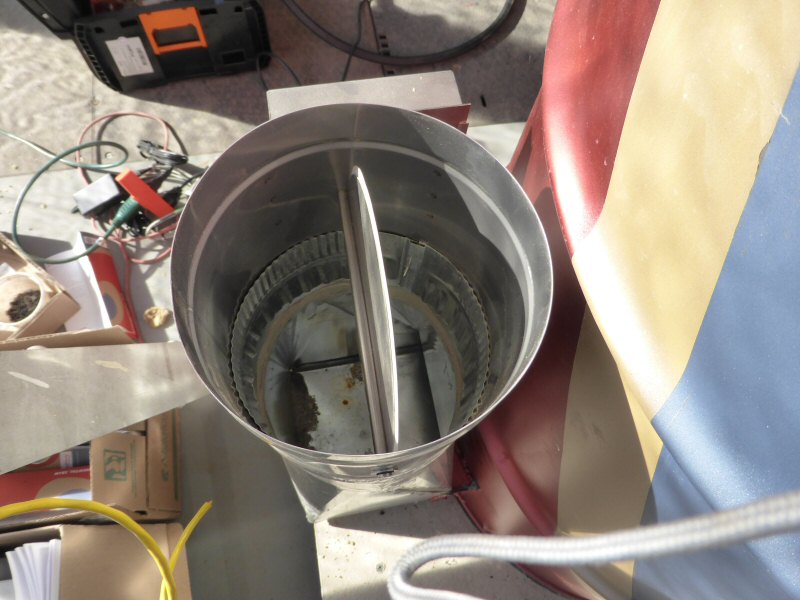
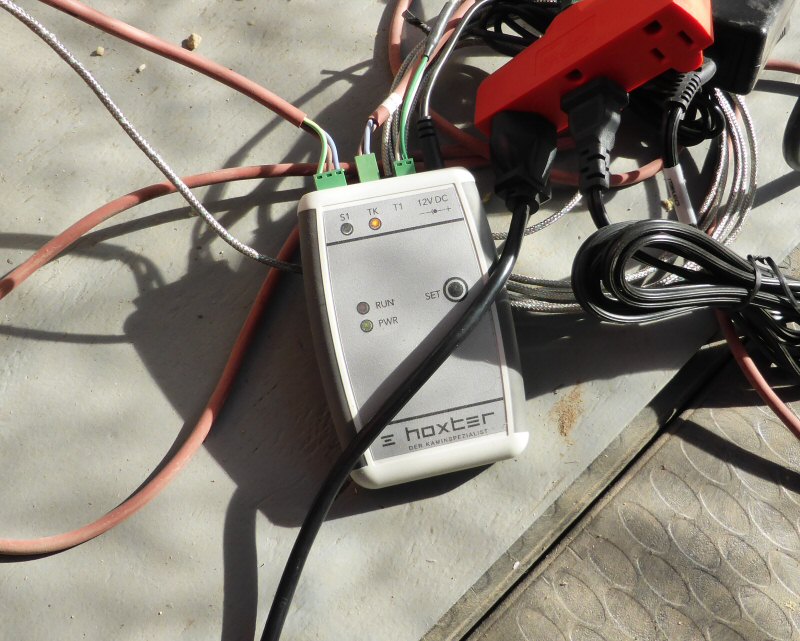
HWAM
Website
Profile
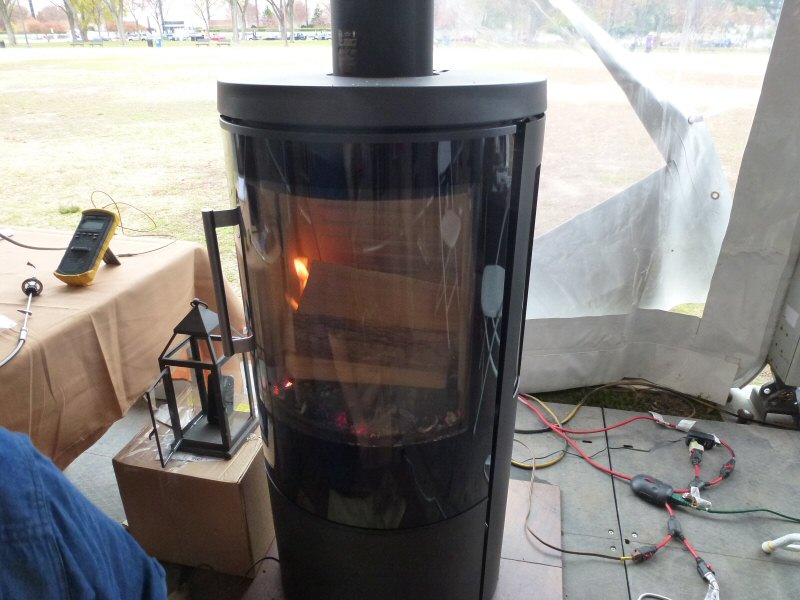
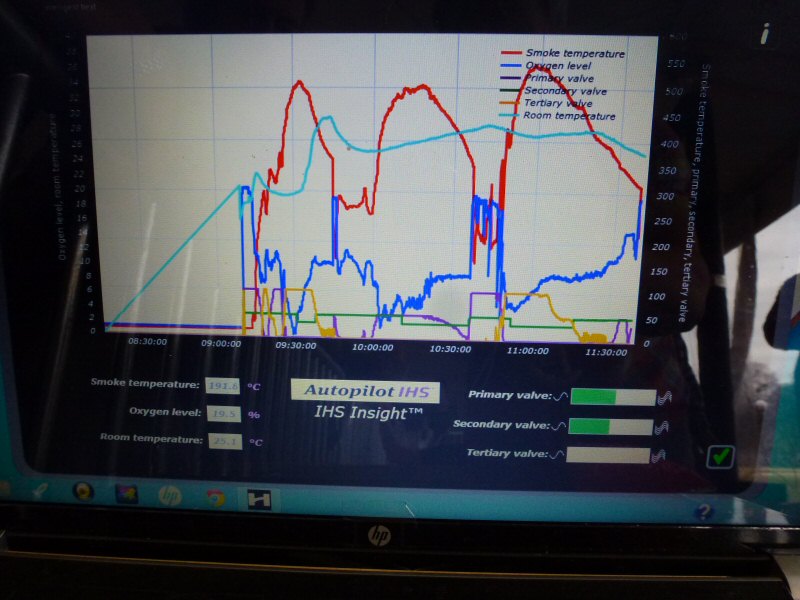
Intensi-Fire
Website
Popular Mechanics profile
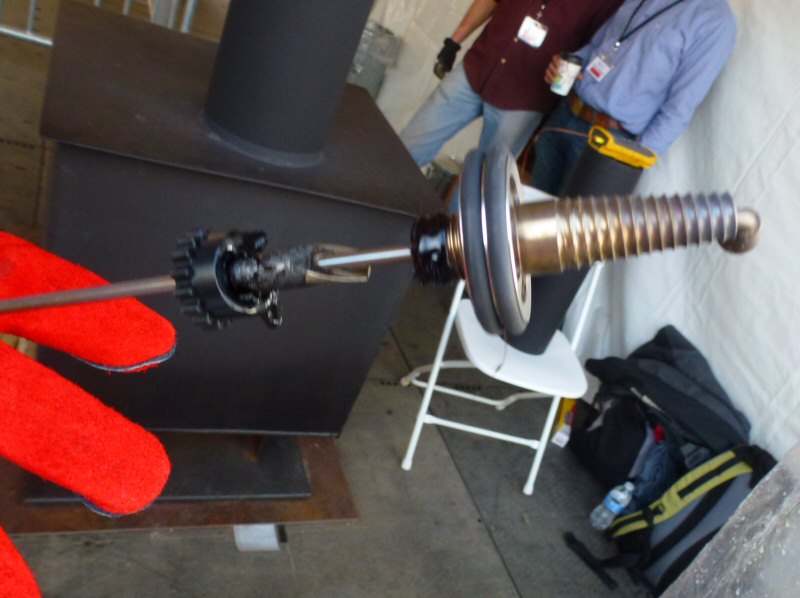
11/15/2013 3:48:42 PM
Melted plastic part on the probe.
Stack temperature was very high, see below.

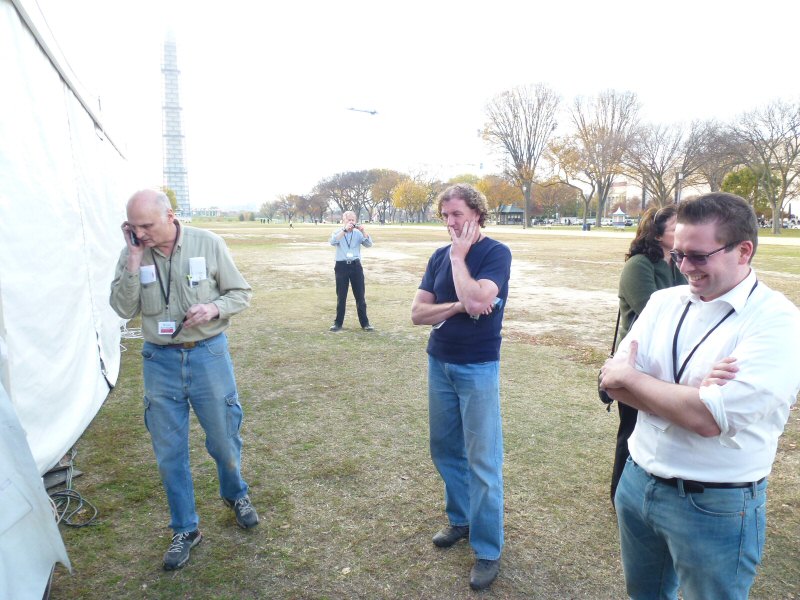
11/15/2013 3:52:20 PM
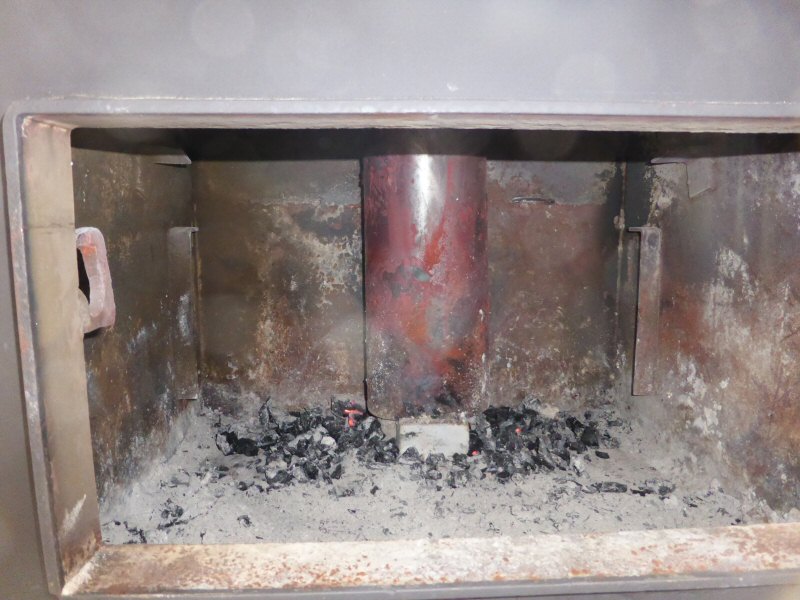
11/16/2013 11:06:48 AM
Walker Stoves
Website
Popular Mechanics profile
First run:
Finish time: 11/14/2013 12:45 PM
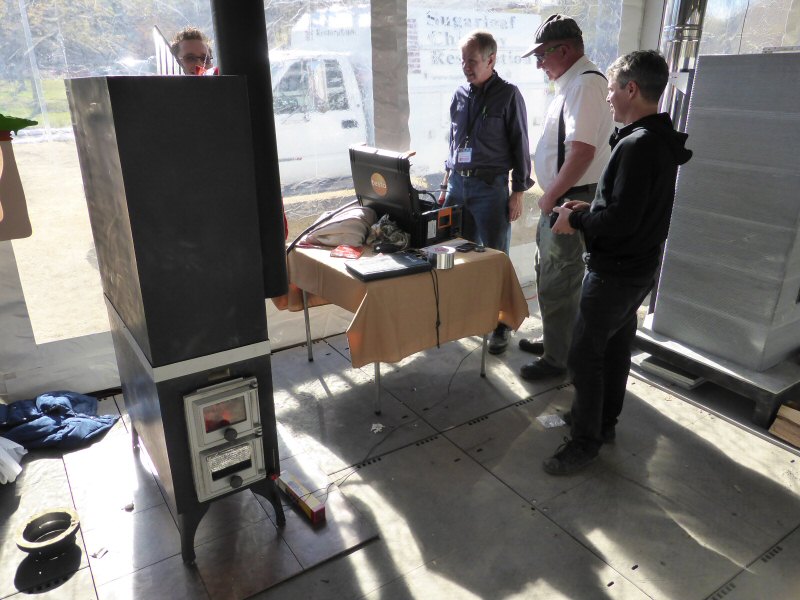
The Walker Stove is a rocket design, with a firebox based on the work of Peter van den Berg in the Netherlands.
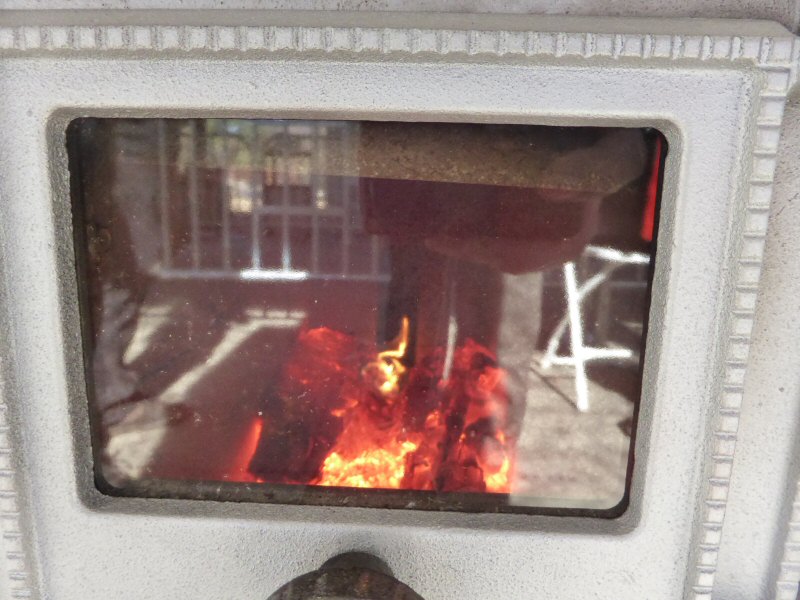
11/14/2013 12:30:16 PM
One issue with testing rocket stoves is that there are no agreed upon fueling protocols for testing.
For the Decathlon, the PM measuring equipment only allowed a 15 minute window during the burn.
The
first test was run with the metal stove protocol, using preloads to
warm up the stove and create a charcoal bed for a hot start.
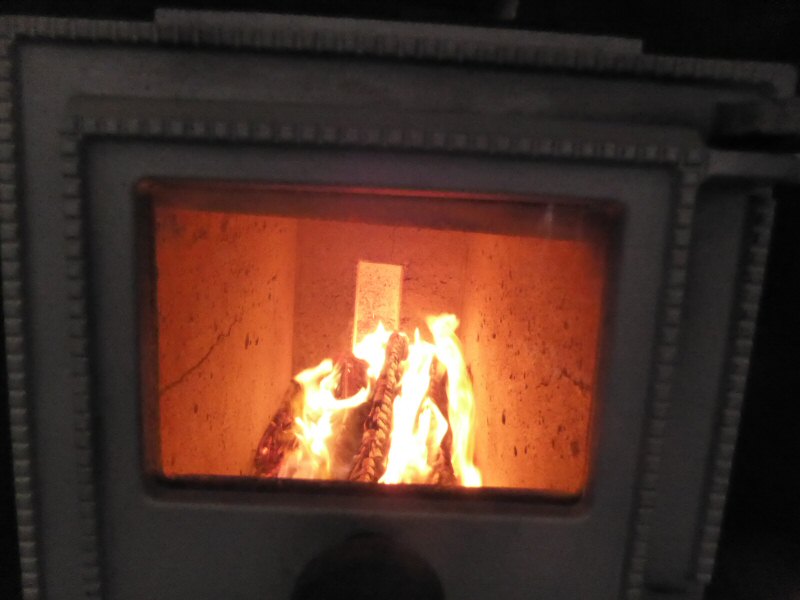
11/16/2013 3:11:52 PM

11/16/2013 4:07:02 PM

11/16/2013 4:12:38 PM
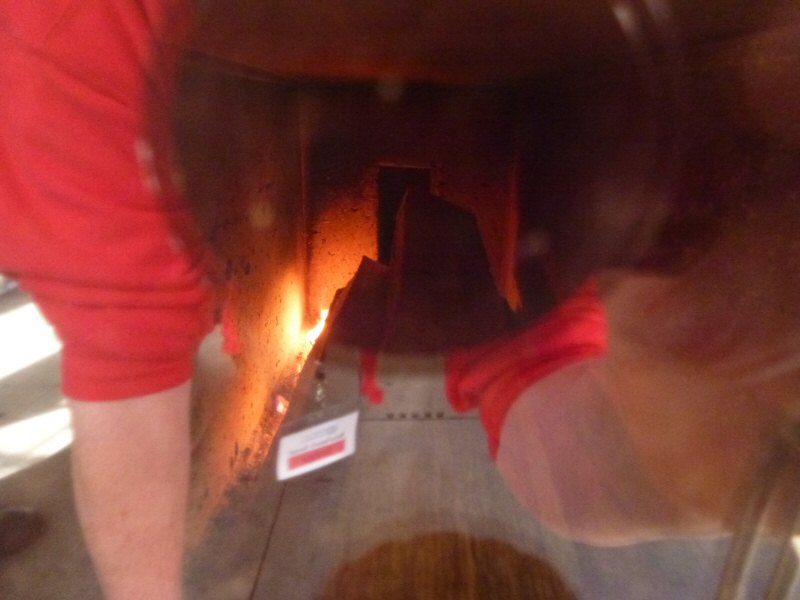
11/18/2013 10:58:38 AM
This
is an informal unofficial retest that was allowed by the judges, using
the manufacturers fueling recommendation, and also allowing
the manufacturer to load the fuel instead of Decathlon staff.
The
test consisted of a load with a cold start, with a reload. This is the
reload. The test window was at the manufacturer's discretion,
and was moved ahead to 10 (?) minutes.
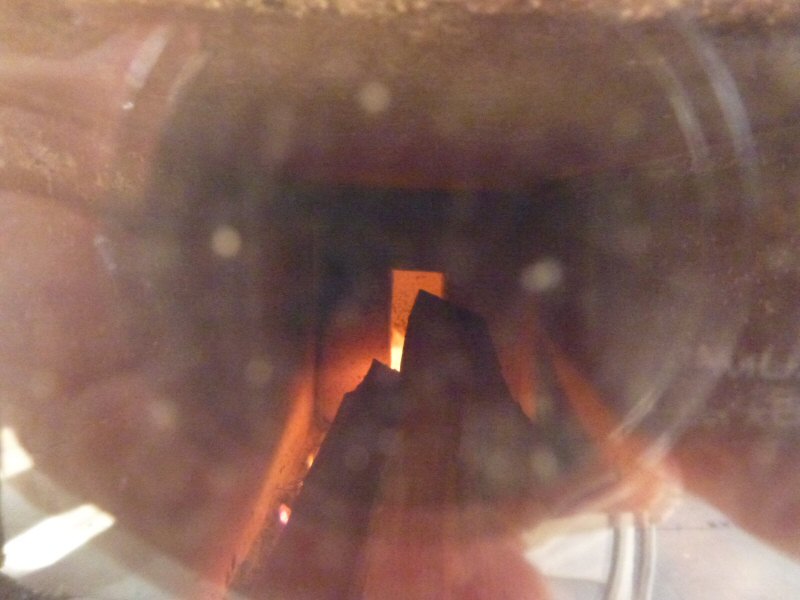
11/18/2013 10:58:38 AM

11/18/2013 10:59:26 AM
No startup smoke
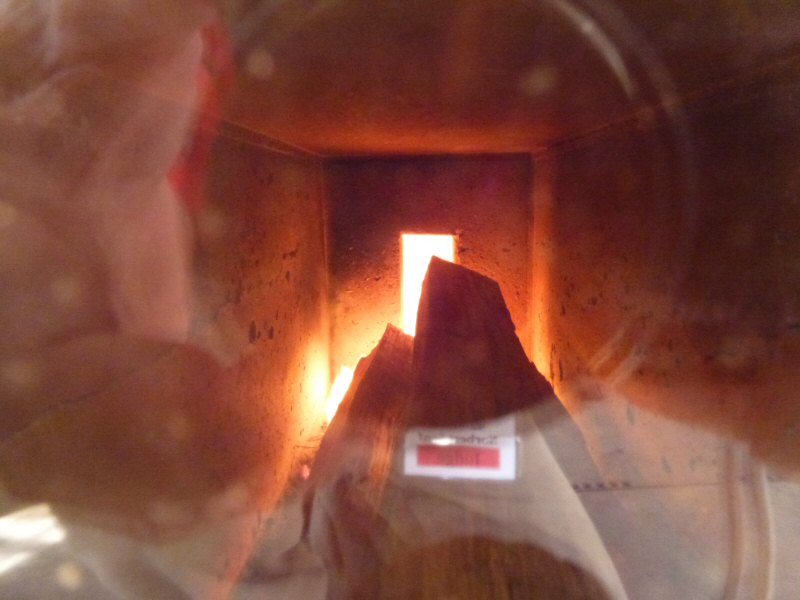
11/18/2013 10:59:52 AM
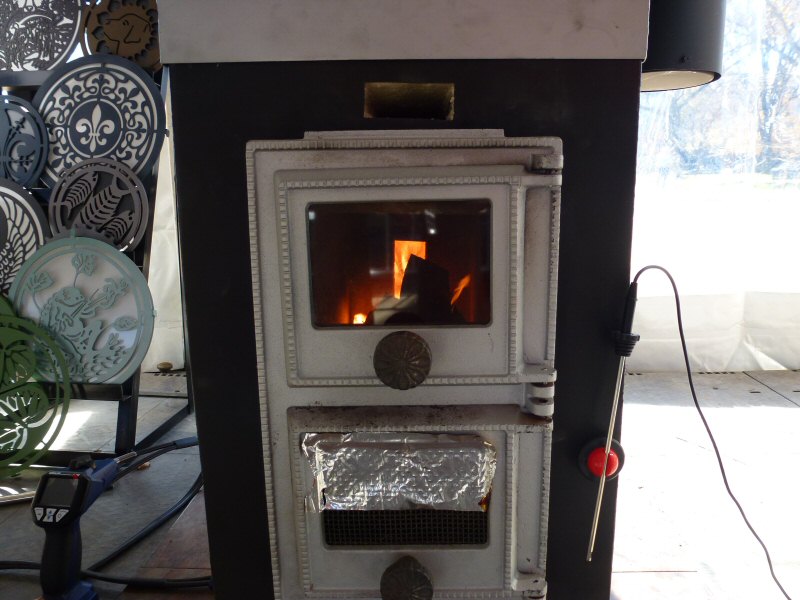
11/18/2013 11:00:02 AM
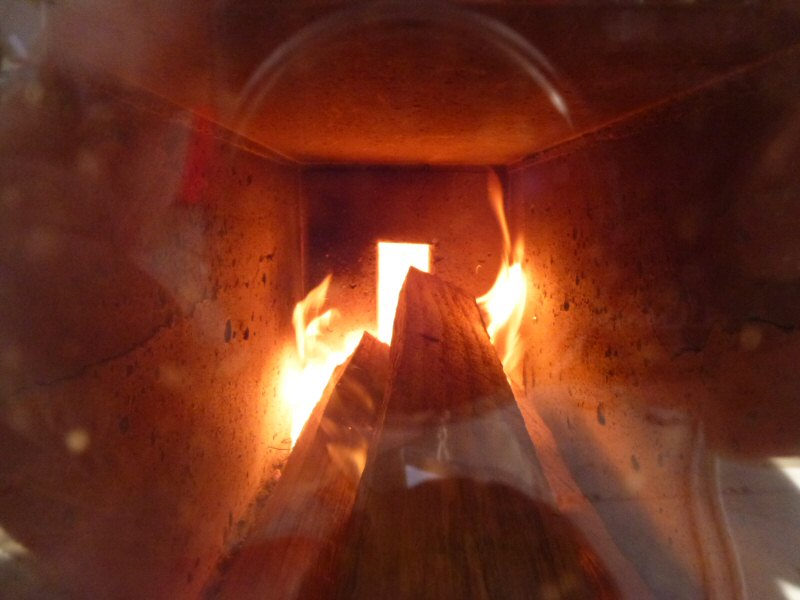
11/18/2013 11:00:26
Very different numbers.
This
highlights the need for the rocket stove community to address the issue
of fueling and testing protocols that are compatible
with methods for other classes of appliances.
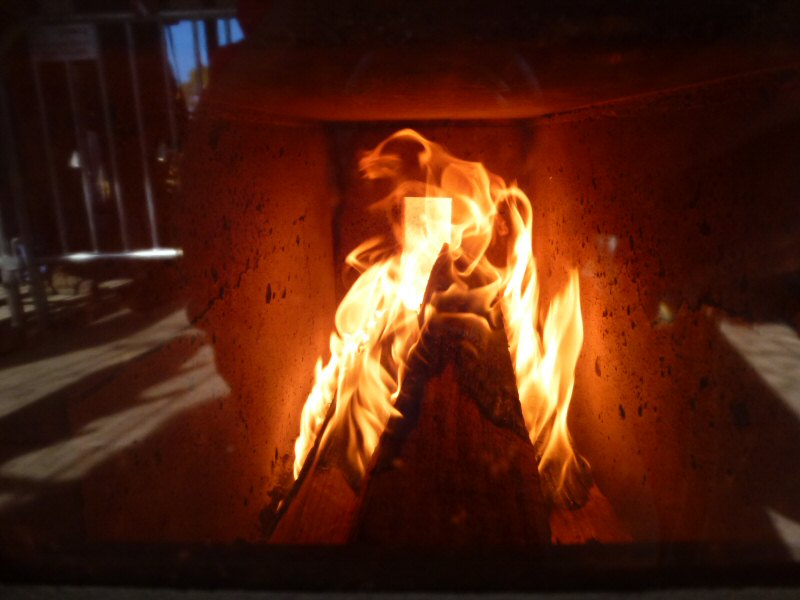
11/18/2013 11:04:14 AM
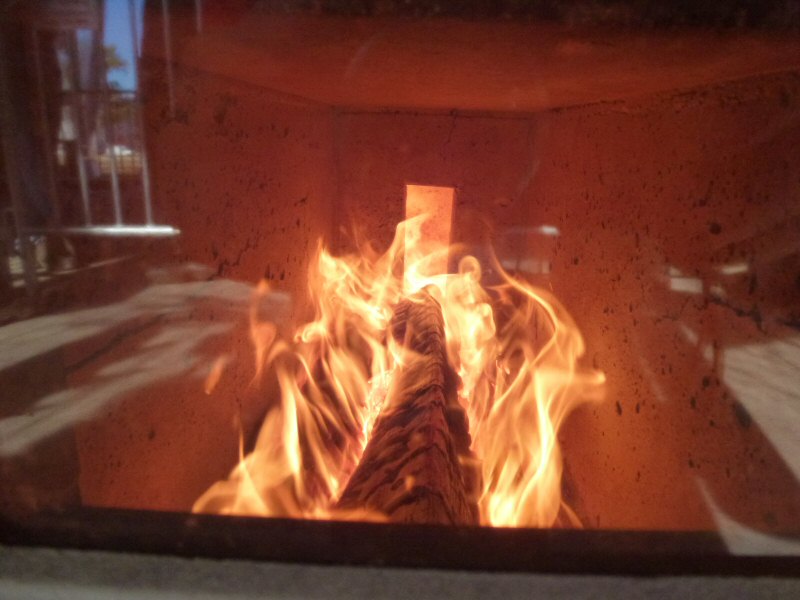
Smart Stove
Website
Popular Mechanics profile
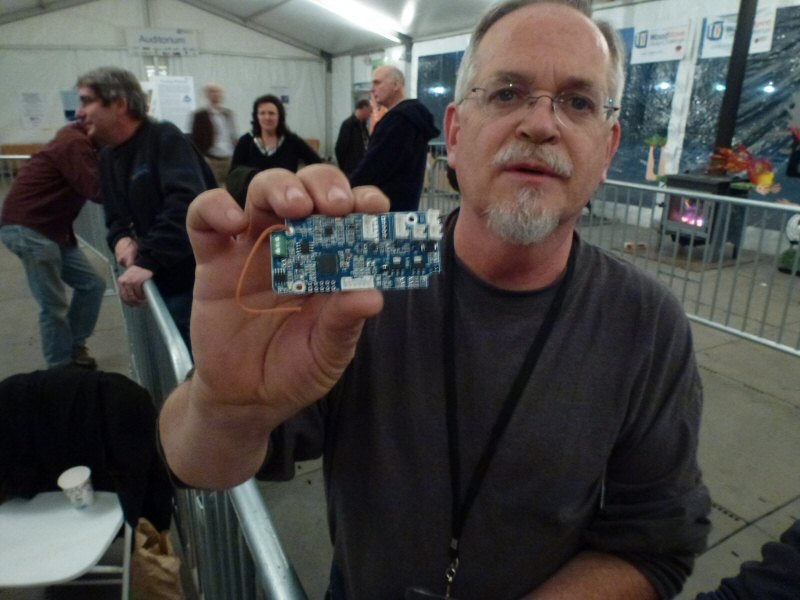
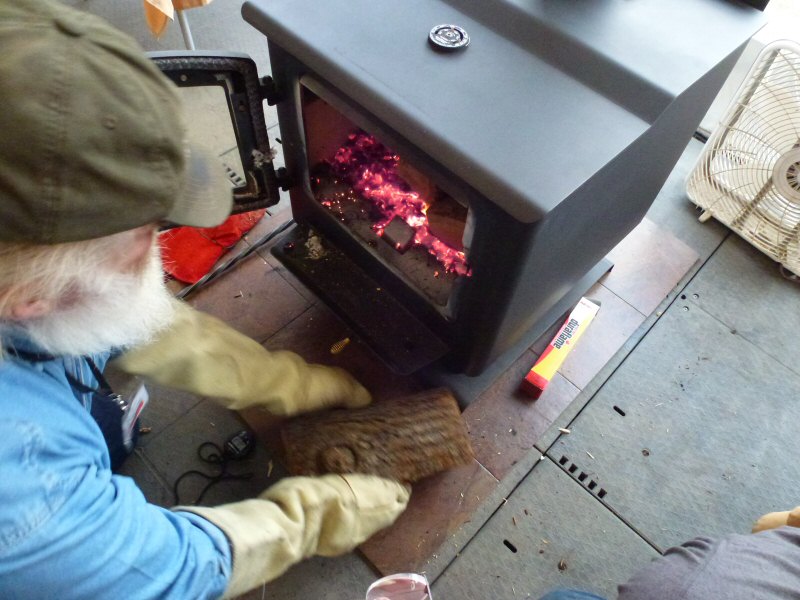
11/15/2013 4:34:44 PM

11/15/2013 4:53:08 PM
Kimberly
Website
Popular Mechanics profile
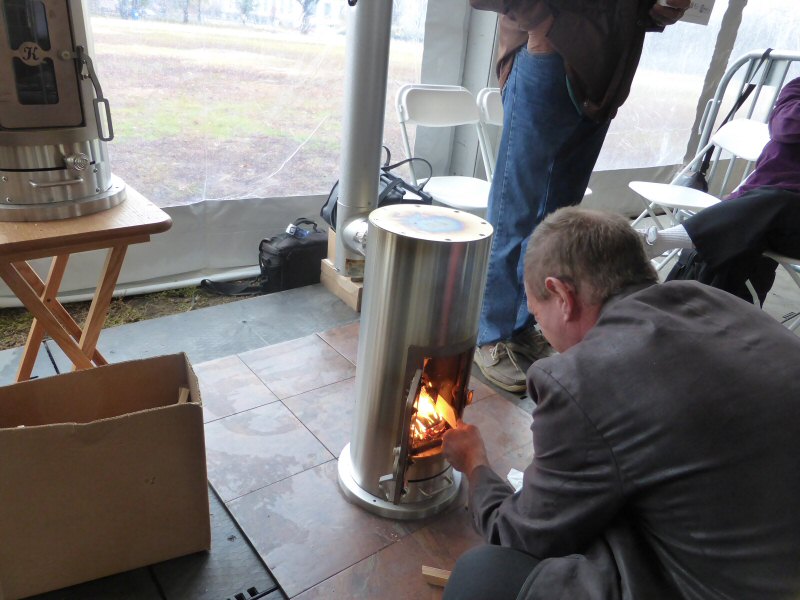
11/16/2012 8:16:16 AM
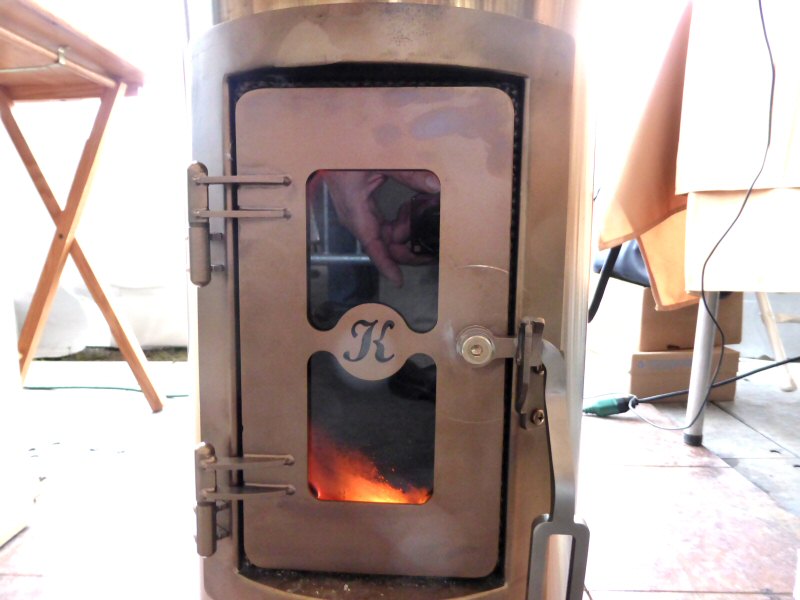
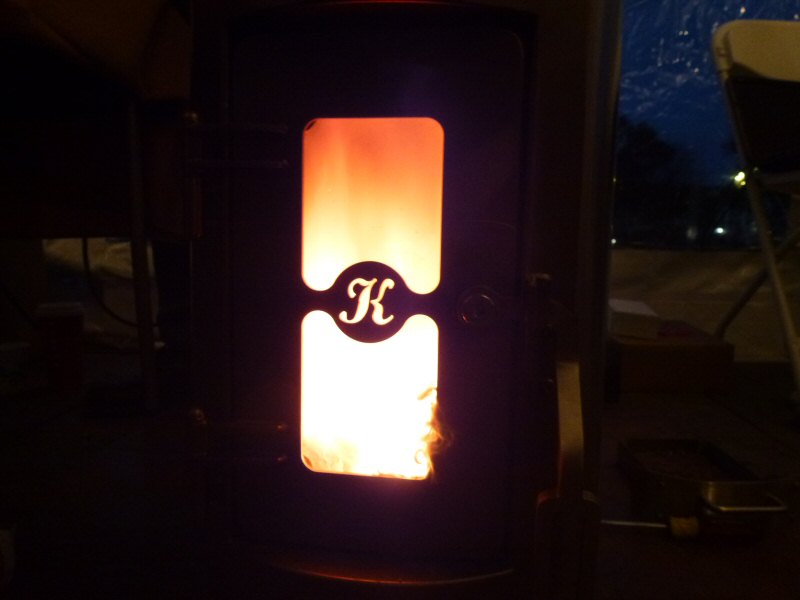
Mulciber
Popular Mechanics profile
First run:
Start time: 11/14/2013 3:21 PM
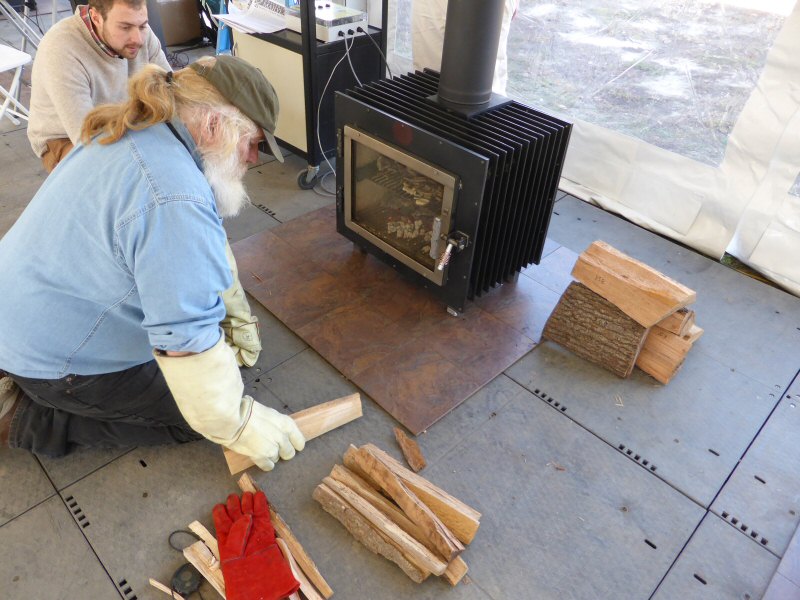
11/14/2013 1:14:28 PM
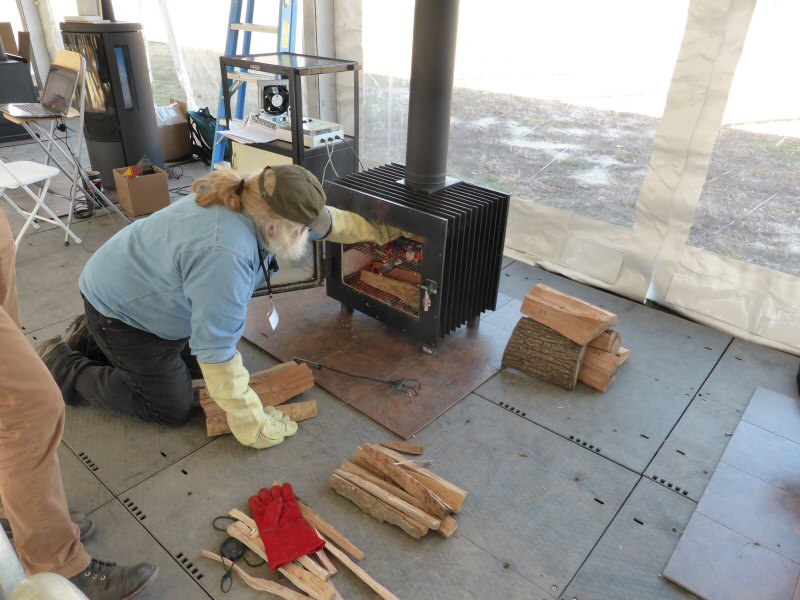
11/14/2013 1:19:06 PM
Preburn reload.
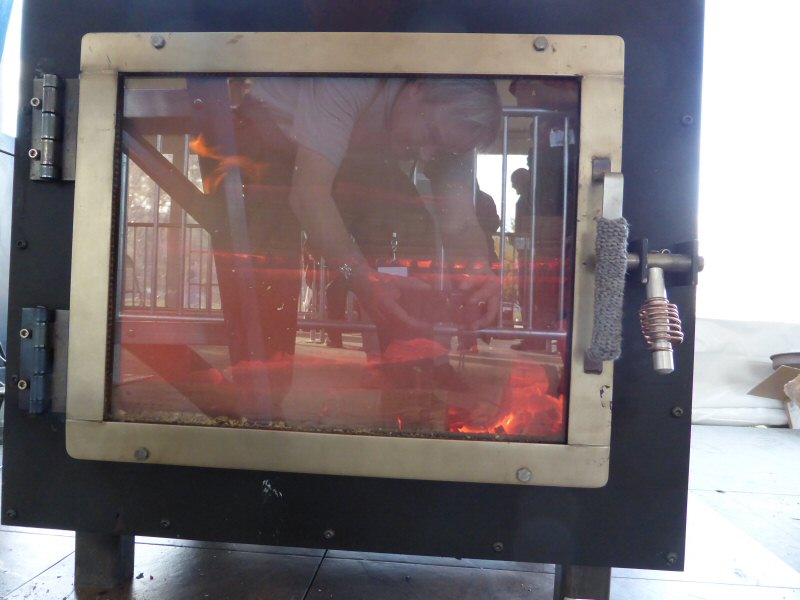
11/14/2013 2:58:08 PM
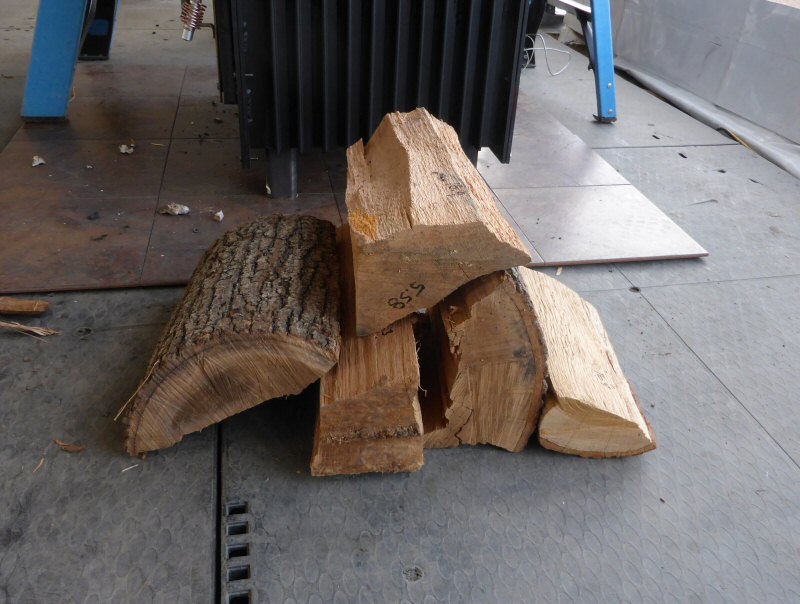
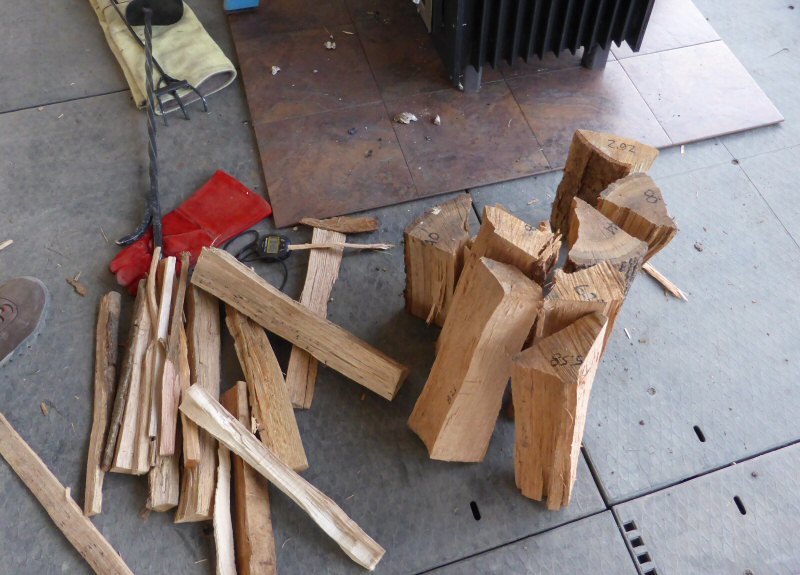
11/14/2013 3:04:08 PM
Main load has been split finer, because there was anticipated difficulty loading it.

Judge Ray Albrecht inserts temperature probe into chimney.
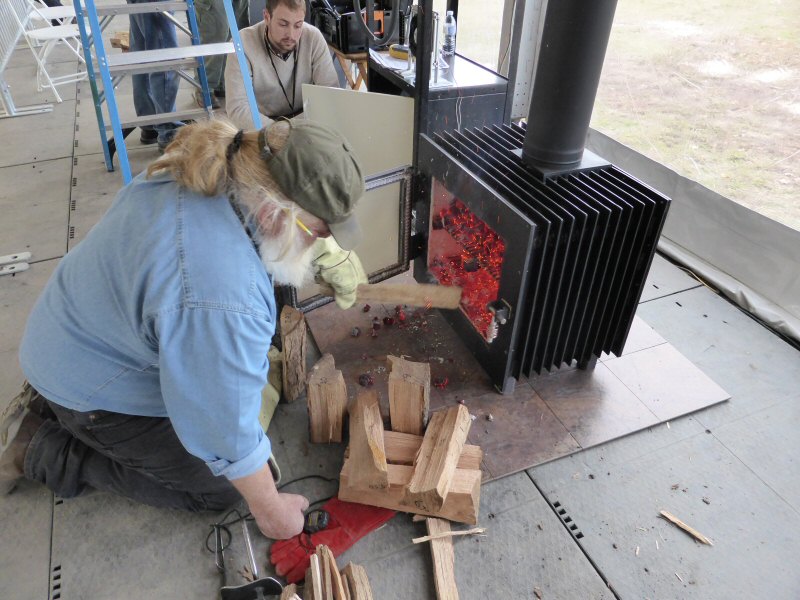
11/14/2013 3:24:16 PM
Loading the test charge.
This page was updated on December 19, 2013
This page was created on November 21, 2013


